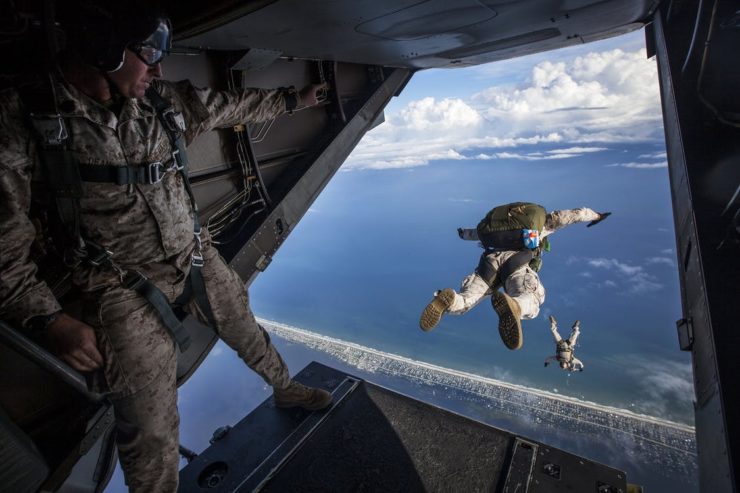 Leaders of the Armed forces have warned that Drones are becoming a big threat facing military pilots. An arm forces chief revealed that clashes between their choppers and drones rank among the top 5 threats faced by the Army, RAV fliers, and Navy. In fact, one of the famous devices may have flown into London landmark The Shard, at the tallest western European building of 1,016ft. The alert started in a Hall debate in Westminster amid increasing fears of a disastrous mid-air crash. According to Top brass, a catastrophic result could occur if a drone comes in contact with an aircraft.
Leaders of the Armed forces have warned that Drones are becoming a big threat facing military pilots. An arm forces chief revealed that clashes between their choppers and drones rank among the top 5 threats faced by the Army, RAV fliers, and Navy. In fact, one of the famous devices may have flown into London landmark The Shard, at the tallest western European building of 1,016ft. The alert started in a Hall debate in Westminster amid increasing fears of a disastrous mid-air crash. According to Top brass, a catastrophic result could occur if a drone comes in contact with an aircraft.
Another army chief, Jeremy Lefroy also said: “There are certain risks to helicopters, whether civilian or military, like the ones used by the police, air ambulance service or search and rescue services. The probability of experiencing a drone strike is now ranked top 5 by our armed force’s Joint Helicopter Command as one of the biggest risks to life during operations.”
There is a compulsory demand for geofencing – undetectable, electronic barriers to stop drones from flying around airports and prisons. Criminals are using drones to smuggle in weapons, drugs and phones into prisons. He added, “Owners must be mandated to register on a database and extract third-party insurance.”
UK’s first ever police drone unit was launched with flying cameras searching crime scenes, for missing people, and much more.
Earlier this month airliners were banned twice from landing at Gatwick Airport when a drone was found flying close to the runway. Due to this closure, planes had to be diverted with others put in holding patterns. It led to “great cost and difficulty to the airport, airlines, and, most crucially, to passengers”.
According to Transport Minister, the Government is planning to uncover strict rules to clamp down on reckless drone pilots. “That will very soon be a history,” he assured. “There is an ongoing serious measure taken about this occurrence and a plan to act.”
Most drones now come with apps showing the drone pilots an interactive map highlighting areas of commercial aircraft operation and ground-based hazards like schools, power lines, or sports locations. Drone operators with the intent of flying close to these areas must “exercise great caution or try to avoid them.” With the increase in geofencing technology that uses GPS to prevent drones from flying into “no-fly-zones”, this threat may soon become history.
|